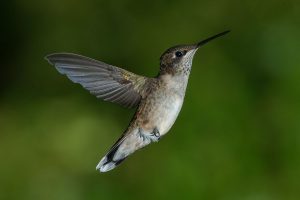By Jack MacRae
I think my hummingbirds have left for the year. I hope they made themselves comfortable before they left.
Hummingbirds probably rate high on any animal likeability index. People always enjoy tiny, cute animals with remarkable behavior. And their feces can teach us much about their lives.
Avian Excrement
Is always an interesting topic to explore. At the very least, it is certainly the most familiar and conspicuous of all dung in the animal kingdom.
 Due to their physiology and anatomy, birds produce and void their waste differently than us mammals. They have a single opening – a cloaca. It simultaneously expels a viscous concoction of uric acid (the gooey white part produced in the kidneys) and poop (the dark part from the bird’s digestive system).
Due to their physiology and anatomy, birds produce and void their waste differently than us mammals. They have a single opening – a cloaca. It simultaneously expels a viscous concoction of uric acid (the gooey white part produced in the kidneys) and poop (the dark part from the bird’s digestive system).
Birds do not have organs for storing their weighty waste so they defecate dozens of times in a day.
Small birds make small droppings. As such, ruby-throated hummingbird feces require magnification to be truly appreciated. Microscopic examination of RTHU droppings reveals insect parts: wings, legs, and antennae.
Extraordinary Extremists
Ruby Throated hummingbirds (RTHU) are nectarivores with slight insectivore tendencies. They get a lot of energy from flower nectar, primarily sugars, but they need bug suppliments for protein.

The extraordinary migration of the RTHU is well known. To reach their wintering grounds of Southern Mexico and Central America, the majority of hummers make a 24-hour, non-stop flight across the Gulf of Mexico. A 600-mile stretch of open water!
To prepare for this arduous trip, Ruby throats entering a stage of insect hyperphagia when they binge on bugs. After a few days of gleaning flies, these minuscule birds will nearly double their weight, fattening themselves from 0.08 ounces to 0.1 ounce.
First year birds make the trip solo without parental guidance, relying on instinct to guide their way. Vaya Con Dios, parajito.
